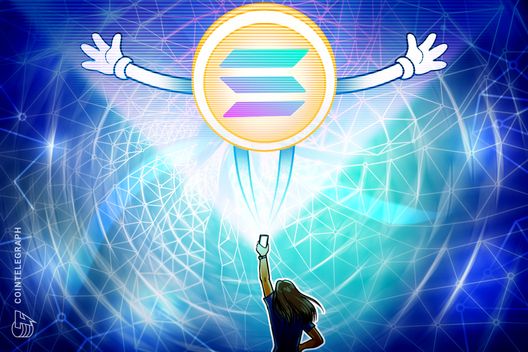- The Jupiter (JUP) price is currently above $0.6, and could target $1.
- While $1 in May may be tough for bulls, JUP has rallied significantly in the past month to support bulls.
- Decentralized finance growth amid the upcoming Jupiter Lend launch could be a catalyst.
Jupiter (JUP) has spiked by more than 11% in the past 24 hours and 21% this past week to hit highs of $0.64.
The decentralized liquidity platform’s native token ranks among the top gainers in the top 100 by market cap, per CoinMarketCap.
As Bitcoin rallied to a new all-time high, fresh interest in altcoins seeped into the JUP market, with gains mirroring those of Hyperliquid and other decentralized finance projects.
Jupiter targets Solana’s DeFi growth?
Jupiter’s surge that has strengthened this past month received a major tailwind support from the project’s latest announcement.
Eyeing DeFi momentum, Jupiter reveals plans for its new lending product – the Jupiter Lend platform is set for unveiling this summer.
According to details the Jupiter Exchange revealed on Thursday, JUP could soon become an integral part of Solana’s DeFi market.
This is down to the highly lauded partnership between Jupiter and Fluid, a DeFi protocol designed to boost mass adoption.
If the summer launch happens, Jupiter Lend will be a major challenger to Kamino Finance, currently dominating the Solana lending market with a total value locked (TVL) of $2.6 billion.
Lend is Jupiter’s quest to penetrate this market with a platform that will leverage Fluid’s dual-layer architecture.
A protocol and liquidity layer means the potential for instant liquidity, with users borrowing against their crypto.
Notably, Jupiter is one of Solana’s top DEX aggregators, currently with $2.67 billion in TVL.
Can this launch and other factors help JUP token’s price?
Jupiter price prediction: Can JUP reclaim $1 in May?
The JUP token’s price hovers near $0.61, off lows of $0.54 on May 22, 2025.
With just over a week to go for May, bulls are eyeing a green close as Bitcoin commands attention from institutional investors.
But having reached $0.6, JUP price has gained by over 100% since hitting lows of $0.3 on April 7.
JUP also rallied amid a buyback program in February.
The latest upside sees Jupiter’s native token post a fresh bullish outlook.

JUP’s daily chart has the relative strength index and moving average convergence divergence signalling upward price action.
In this case, a breakout to $0.83 could propel bulls towards the psychological $1 or higher.
On the flipside, a reversal that sends JUP below $0.57 will likely catalyze a revisit of support around $0.47.
The post JUP price prediction as Jupiter eyes dominance in Solana DeFi appeared first on CoinJournal.


